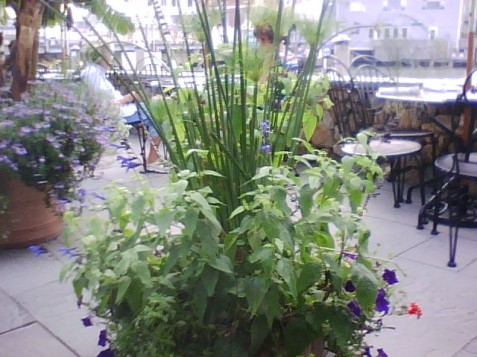Years ago, I had a wonderful aunt who used to give me and my sisters gift certificates to White Flower Farm every Christmas. White Flower Farm, if you’ve never done business with them, is a big mail-0rder plant company based in Connecticut that’s famous for its droll catalog write-ups, supposedly penned by the folksy Amos Pettingill. But I digress. One Christmas, one of the plants I ordered from White Flower was a white Phlox paniculata called ‘David.’ I’d never grown phlox before, but ‘David’ made me a believer, with big, long-lasting heads of pure white flowers with a sweet, soft scent.
Alas, the scent seemed to attract my mutt Homer, who made it his mission to piss on ‘David’ first thing every morning. After three seasons, ‘David’ gave up the ghost. I’d liked him so much that I contemplated replacing him. But before I had a chance to, the company I trial-garden for, Proven Winners, sent me another phlox, ‘Flame’ purple. Purple–not my favorite. But … whatever. Free plant. I put it where David had once shone and pretty much forgot about it. I don’t remember it blooming more than a tiny bit the first year, or the next.
Ah, but this year! This year, that little phlox is far and away the star of my border. It’s huge, about three feet wide and two feet tall, despite the fact that the company’s own literature says it should be only a foot high and a foot wide. Clearly, this phlox is on steroids. It gave me one big, wonderful flush of bloom in June, and now, in late July, after only a brief rest, it’s covered with flowers again. I’ve never seen anything like it. Nor have I ever seen anything like those first few seasons of utter unprepossessingness followed by pure glory.
Proven Winners notes that bunnies “may find phlox very tasty.” That could explain the mystery of why I have all those bunnies in my yard this year! And if they’re nibbling my phlox, let them keep on doing it, because clearly, they’re only helping it!
Photo courtesy of Proven Winners®, http://www.provenwinners.com.









